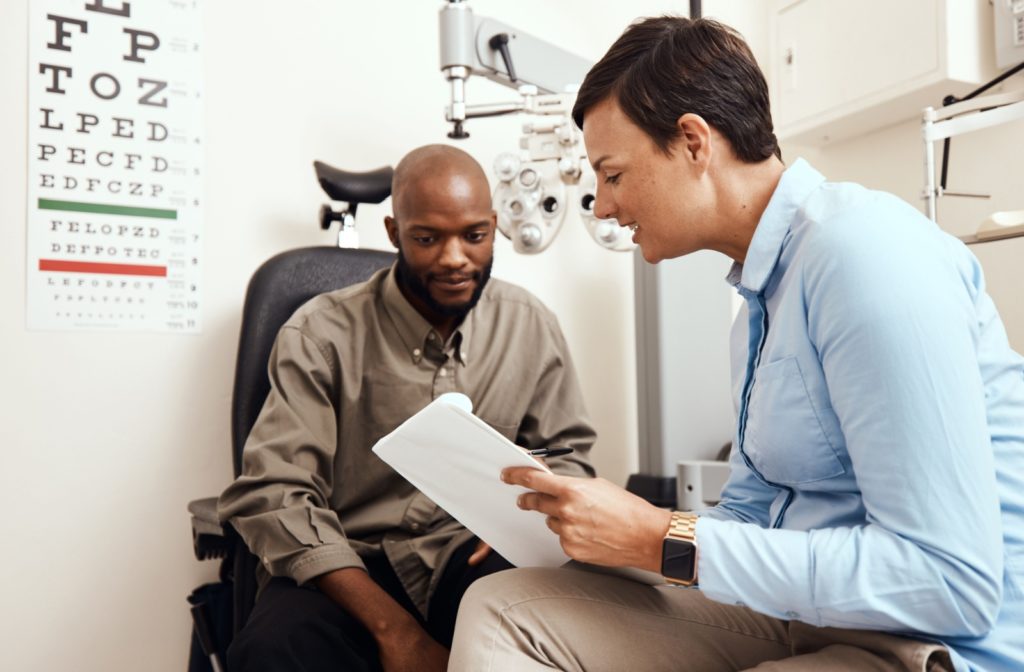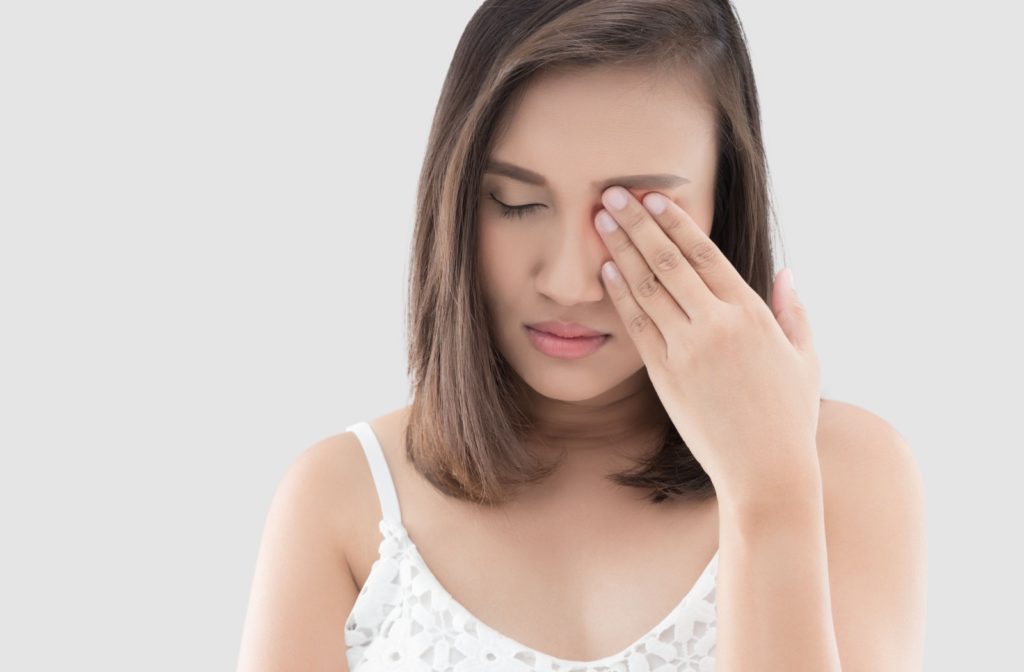A red, uncomfortable bump on your eyelids—that’s probably a stye. This is a common eye condition that develops due to a clogged oil gland or hair follicle. While they’re treatable with the help of an experienced optometrist, styes can be extremely frustrating, and they often return to boot. So why would you suddenly keep getting styes, and what can you do about it?
If you’re dealing with recurring styles, it’s important to improve your eyelid hygiene. Styes develop when your follicles, glands, or pores become plugged with bacteria or harmful particles, so make sure you’re regularly washing the affected area with gentle soap and water. If this doesn’t help, visit your optometrist so they can examine the area to determine what’s causing your styes.
What Are Styes?
Styes, also known as hordeolums, are localized infections that form on the eyelid. They can develop on the eyelid’s inside or the outside edges, and often look just like a small pimple. Styes develop due to a clogged hair follicle or oil gland.
These tiny spaces sometimes become clogged or obstructed, leading to a small area in which bacteria can thrive. Eventually, a small red bump forms. This bump can become sensitive and painful to touch as inflammation sets in.
Usually, styes are harmless, and they often go away within a week or so on their own. However, this isn’t always the case; sometimes, the infection can stick around longer, and may even cause recurring styes. In some situations, the infection can even develop into something called a chalazion—a red, painless bump that doesn’t go away on its own and may even require surgery.
How to Recognize a Stye
With styes, the most obvious symptom is a visible red bump. These often look like a pimple, but are localized to the eyelids. Other common signs of a stye include:
- Mild to moderate swelling
- Pain or tenderness in the affected area
- Crusting along the eyelid margin
- A sensation of something being in your eye
- Increased tearing
If you recognize these signs, it’s time to talk to your optometrist. Never try to pop a stye on your own; doing so can spread bacteria across the surface of your eye and potentially cause an eye infection.
What Causes Styes?
All across your skin, you have something called ‘normal flora‘. These are bacteria and other microorganisms that typically don’t cause any problems. However, your normal flora can sometimes block a hair follicle or oil gland, creating a small space where these organisms become trapped. This is an ideal environment for more harmful bacteria, which can then begin to thrive and set off the initial symptoms of the stye.
However, bacteria aren’t the only cause of styes; anything that blocks or clogs follicles and oil glands can result in one. Other common causes include:
- Poor eyelid hygiene
- Sharing makeup or eye products with someone else
- Leaving eye makeup on overnight
- Using old or expired makeup products
While styes aren’t often contagious, the bacteria can be spread from person to person through shared items. Proper hygiene is key for preventing styes—but what do you do if you’re already dealing with one?
How to Get Rid of a Stye
There is good news; you can often get rid of a stye through simple home remedies. In most cases, you can get rid of a stye by:
- Using warm compresses. Apply a compress to the affected eye for 10 minutes several times a day. This helps to unblock the oil glands and promote drainage.
- Maintaining proper eyelid hygiene. Make sure to clean your eyelids gently with a mild soap or tear-free baby shampoo diluted in water. This helps remove any residual bacteria and prevents worsening symptoms.
- Wash your hands and avoid touching your eyes wherever possible. This prevents bacterial transmission from your environment.
If the stye persists, becomes more painful, or your symptoms worsen in any way, visit your optometrist. They can provide you with an antibacterial ointment that helps remove the stye. In some cases, your optometrist may even be able to professionally drain the stye to help you find immediate relief.

Tips for Preventing a Stye
With styes, prevention is often easier than treatment. To avoid these uncomfortable bumps, proper hygiene is the simplest step. Make sure that you:
- Always wash your hands before touching your eyes or face.
- Discard old or expired makeup products, and avoid sharing them with others.
- Ensure you remove all eye makeup before going to sleep to prevent clogged glands.
- Manage your stress, as this can weaken your immune system
- Maintain a healthy diet to keep your immune system strong.
These simple steps can make a big difference in keeping your eyes and skin healthy, preventing conditions like styes long before they start.
When to See an Optometrist
While styes can be an annoying and painful experience, you don’t have to deal with them alone. Instead, come talk to us at Dr. Taylor Bladh, O.D. We can examine your eye and find the right way to deal with your stye, so book an appointment with us today.



